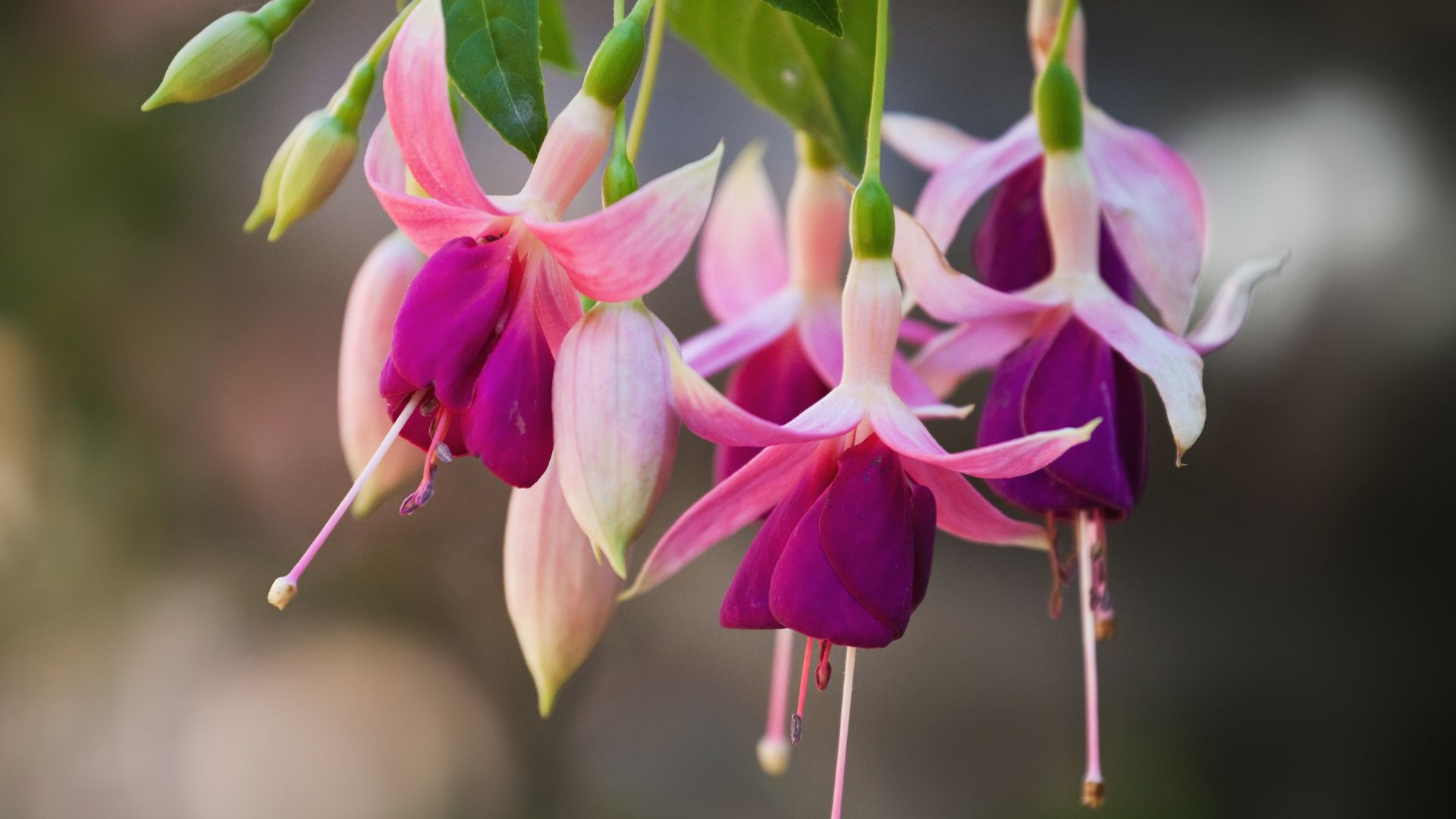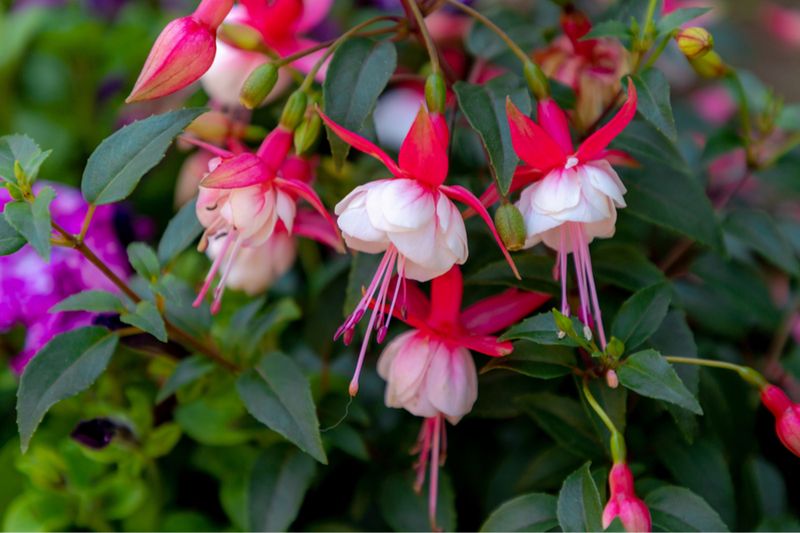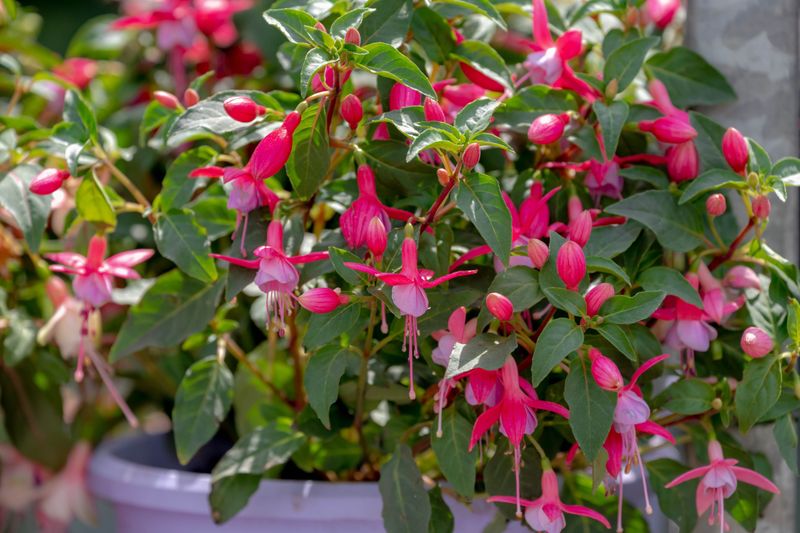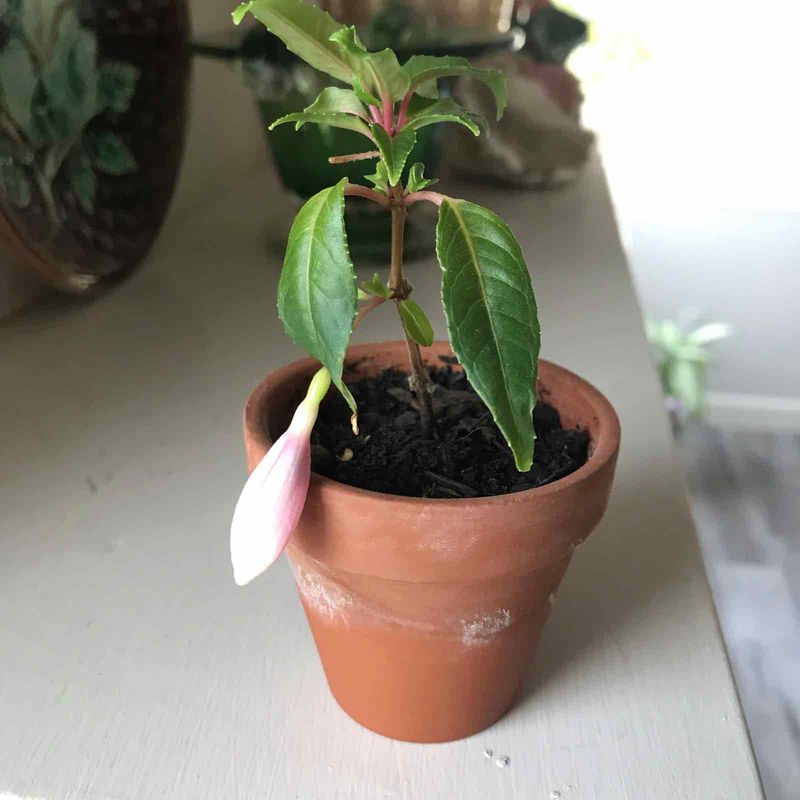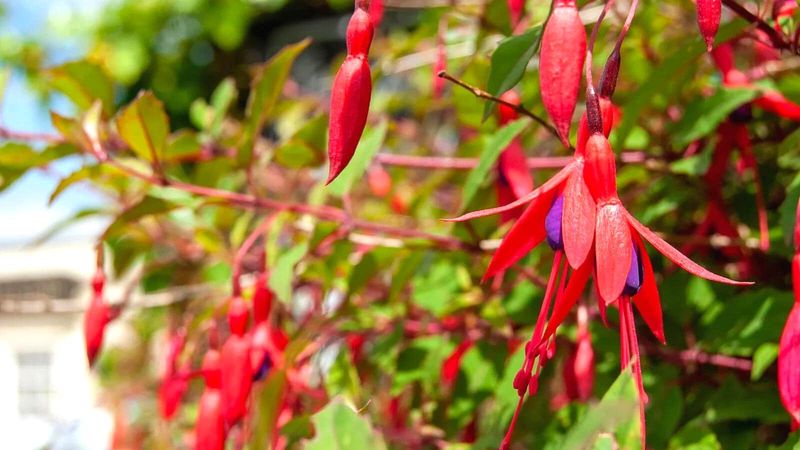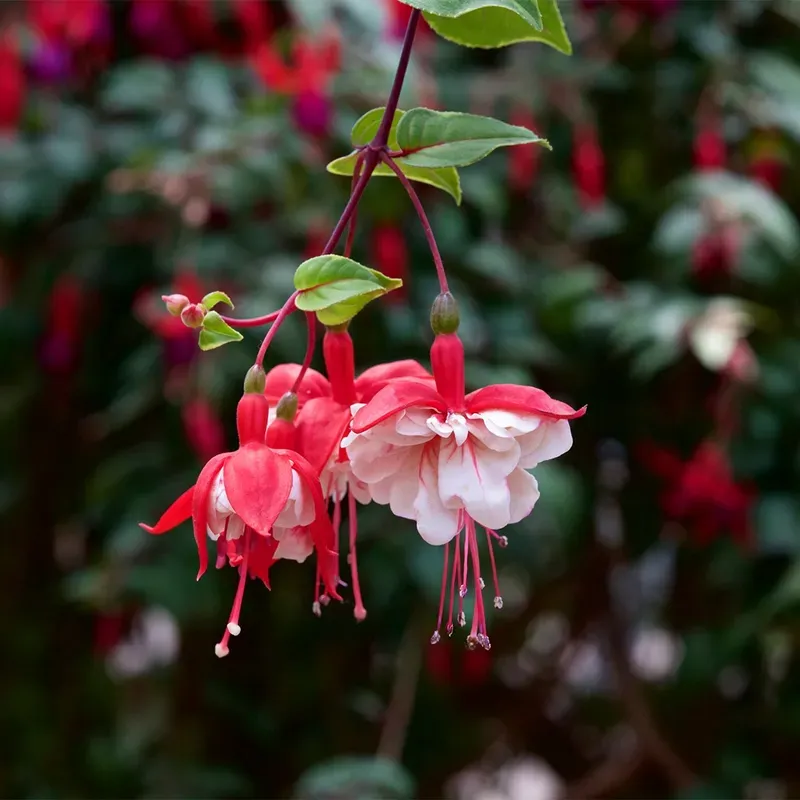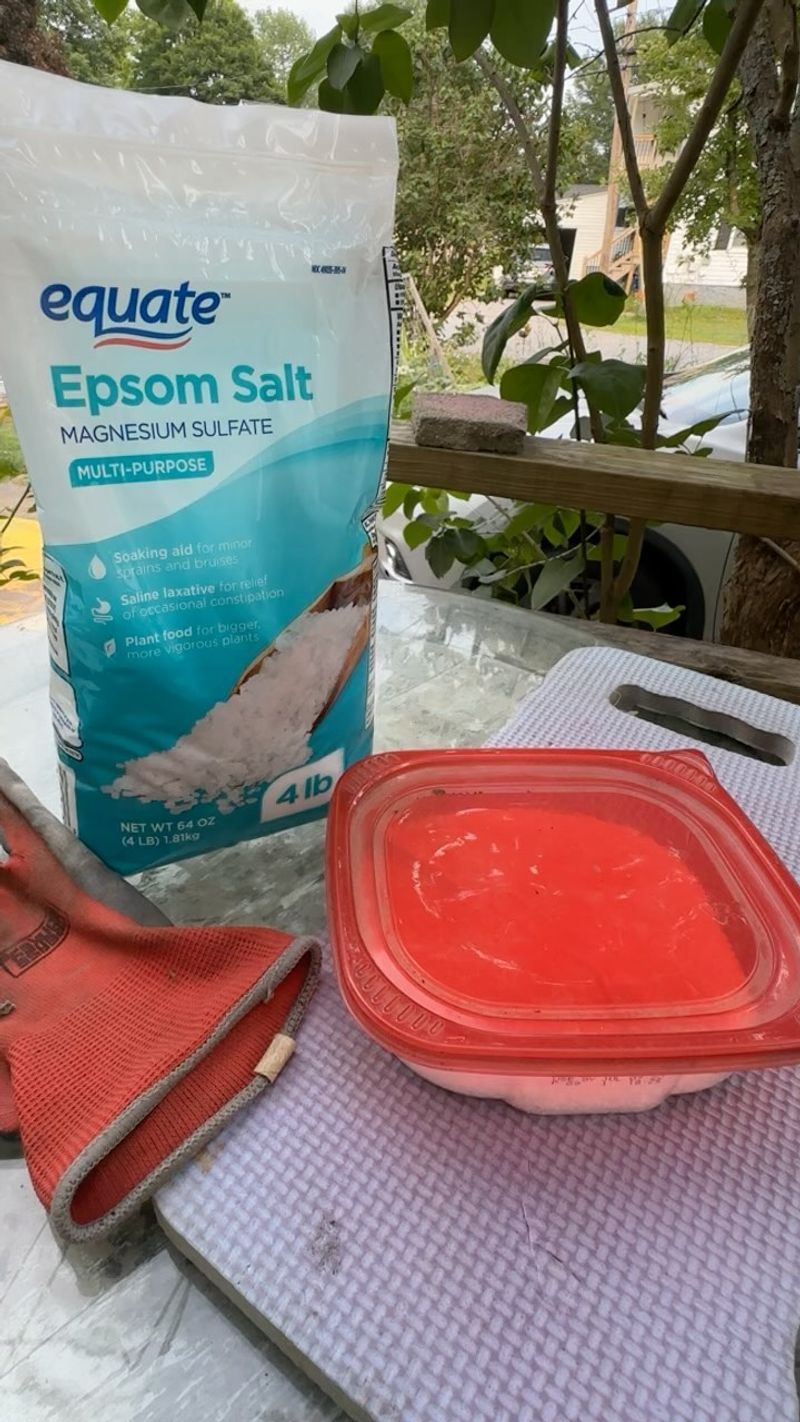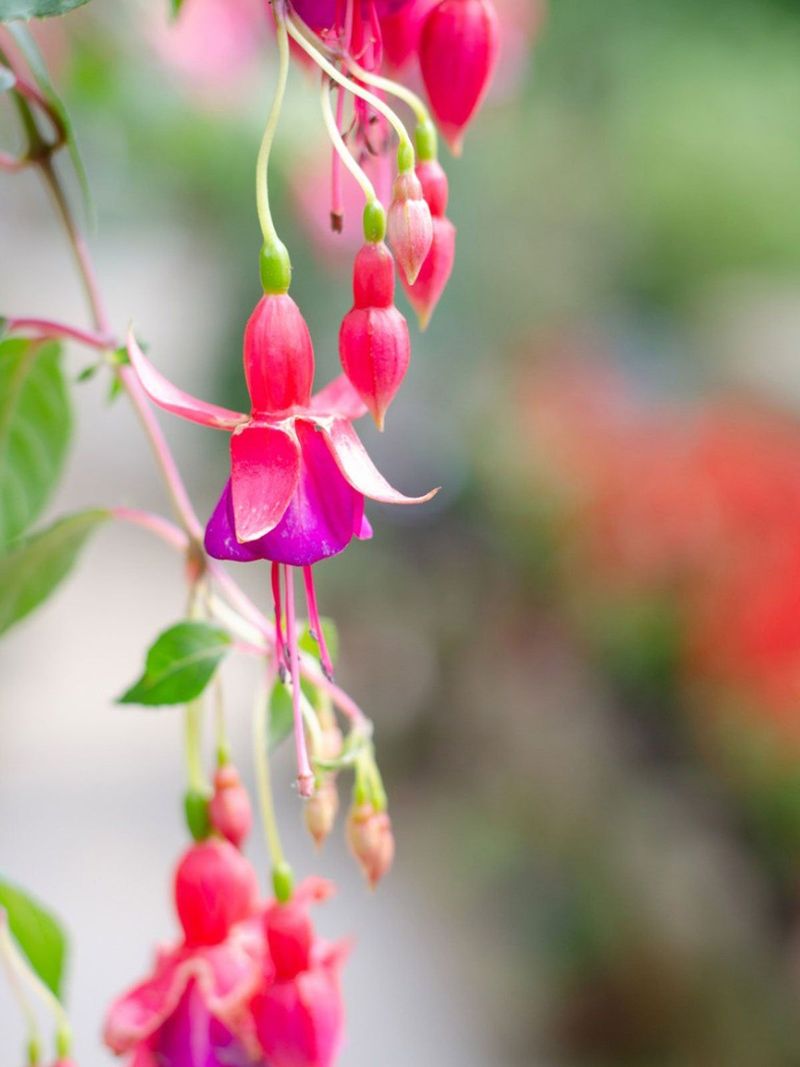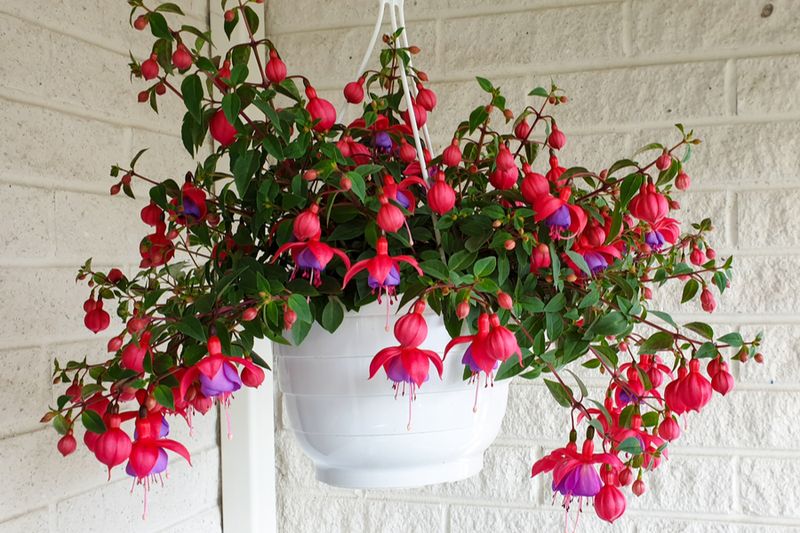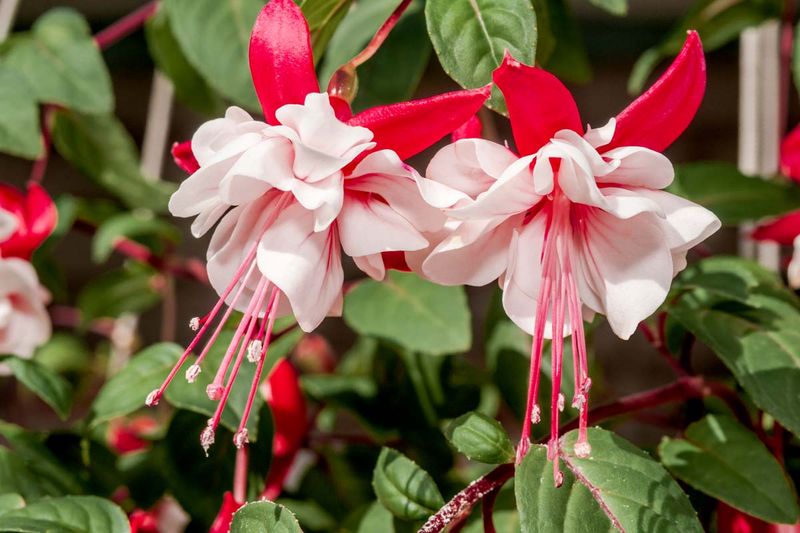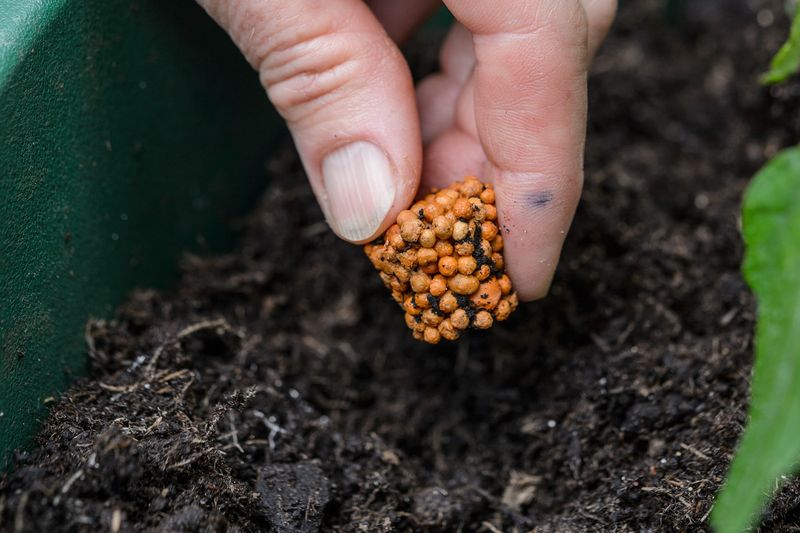Fuchsias are some of the most stunning plants in my garden, but I’ve learned they won’t put on a good show without the right feeding routine. For a while, mine looked a bit sad—green but barely blooming—until I figured out what they really needed.
Once I started fertilizing properly, the transformation was incredible—suddenly those delicate, drooping blooms were everywhere. Whether you’ve got yours in baskets, pots, or tucked into the garden, feeding makes all the difference.
These simple fertilizing tips will help keep your fuchsias happy and blooming like crazy, while steering clear of the common mistakes that can hold them back.
1. Dilute Liquid Fertilizer For Best Results
Half-strength liquid fertilizer works wonders for fuchsias. I’ve found that using it at half the recommended concentration prevents fertilizer burn while still providing all the nutrients these flowering beauties need.
Apply this diluted solution every two weeks during the growing season. My neighbor struggled with weak blooms until switching to this method, and now her hanging baskets are the envy of our street.
For potted fuchsias, I like to water first, then apply the fertilizer solution to avoid shocking the roots. This gentle approach has kept my plants flowering from spring right through to the first frost.
2. Choose A Balanced NPK Formula
Look for fertilizers with equal or nearly equal numbers on the NPK label (like 10-10-10 or 7-9-5). Fuchsias need this balance to develop both healthy foliage and abundant flowers.
When I started growing fuchsias, I made the mistake of using high-nitrogen fertilizer. My plants grew lots of leaves but few flowers! Switching to a balanced formula transformed my results almost immediately.
During cooler months, I slightly reduce the frequency but maintain the same balanced formula. This approach provides steady nutrition without pushing too much growth when conditions aren’t ideal.
3. Morning Fertilizing Makes A Difference
Apply fertilizer in the morning when fuchsias are most receptive to nutrient uptake. I switched to morning applications last summer and noticed my plants responded much better than when I fed them in the evening.
Morning feeding gives plants all day to process nutrients before temperatures drop at night. This timing also ensures any fertilizer that splashes on leaves dries quickly, preventing potential leaf burn.
On particularly hot days, I’ll fertilize even earlier – around 7am – to give my fuchsias a boost before the heat stress begins. This small timing adjustment has made a noticeable difference in bloom production.
4. Slow-Release Granules As A Base Layer
Incorporate slow-release fertilizer granules into your potting mix when planting fuchsias. This provides a steady baseline of nutrition that lasts for months.
I mix a tablespoon of slow-release granules into the soil when potting up new fuchsias each spring. My garden club friend taught me this trick, and it saves me from worrying about forgotten feedings during busy weeks.
Even with granules in place, I still supplement with occasional liquid feeds during peak blooming periods. This two-pronged approach gives fuchsias both consistent nutrition and periodic boosts when they’re working hardest to produce flowers.
5. Feed Less During Dormancy
Reduce fertilizing significantly when your fuchsias enter their dormant period. Most fuchsias slow down or stop growing during winter, and feeding during this time can stress the plants.
I learned this lesson the hard way when I continued my regular feeding schedule through winter. My fuchsias developed weak, leggy growth that was prone to disease. Now I stop fertilizing entirely from late fall until I see new growth in spring.
For overwintered plants in mild climates, you might give one very dilute feeding midwinter if you notice some active growth. Otherwise, let them rest and conserve energy for the coming growing season.
6. Compost Tea Brings Natural Benefits
Homemade compost tea provides gentle nutrition and beneficial microorganisms that commercial fertilizers lack. I started using it last year after a garden mentor suggested it, and the improvement in my fuchsias’ overall health was remarkable.
To make it, soak a cloth bag filled with finished compost in water for 24-48 hours. The resulting brown liquid contains valuable nutrients and helpful bacteria that support plant health.
Apply compost tea every 2-3 weeks as a supplement to other fertilizers. My fuchsias developed stronger stems and more vibrant flowers when I added this natural boost to their feeding routine.
7. Watch For Yellowing Leaves
Yellowing lower leaves often signal that your fuchsia needs more nutrients. This is especially common in hanging baskets where frequent watering can flush nutrients from the soil.
When I notice yellow leaves developing, I give an immediate feeding with a liquid fertilizer that includes micronutrients like iron and magnesium. These elements are often what’s missing when leaves lose their green color.
Don’t wait too long to address yellowing – I once ignored these signs and ended up with a severely nutrient-deficient plant that took weeks to recover. Quick action usually turns things around in just a few days.
8. Phosphorus Boosts Bloom Production
When your fuchsias are setting buds, a slight increase in phosphorus can dramatically improve flowering. I switch to a bloom-boosting fertilizer (with a higher middle number in the NPK ratio) about a month before peak blooming season.
Last summer, I experimented by giving half my fuchsias this phosphorus boost while keeping the others on regular feed. The difference was unmistakable – nearly twice as many flowers on the phosphorus-fed plants!
Apply this bloom-boosting fertilizer every 10-14 days during bud formation. I’ve found that liquid formulations work fastest, giving my fuchsias that extra push right when they need it most.
9. Rainwater Makes Fertilizer More Effective
Whenever possible, mix your fertilizer with collected rainwater instead of tap water. Rainwater’s slightly acidic pH helps fuchsias absorb nutrients more efficiently than alkaline tap water.
I keep a rain barrel connected to my gutter specifically for my acid-loving plants like fuchsias. The difference became clear when I had to use tap water during a dry spell – my plants simply didn’t respond as well to the fertilizer.
If you must use tap water, let it sit for 24 hours before mixing in fertilizer. This allows chlorine to dissipate and brings the water closer to room temperature, reducing shock to your fuchsia’s sensitive root system.
10. Foliar Feeding For Quick Results
Spray diluted liquid fertilizer directly onto fuchsia leaves for fast-acting nutrition when plants need a quick boost. The leaves absorb nutrients directly, bypassing the roots entirely.
I use this method when my fuchsias look stressed or after heavy rain has leached nutrients from the soil. A simple spray bottle with very dilute fertilizer (about quarter-strength) does the trick perfectly.
Always apply foliar feeds in the early morning so leaves dry quickly, and avoid spraying open flowers. My garden mentor taught me this technique years ago, and it’s saved many struggling plants when they needed rapid intervention.
11. Magnesium Sulfate Enhances Color
Epsom salt (magnesium sulfate) can intensify the colors of your fuchsia flowers. I dissolve one tablespoon in a gallon of water and apply it monthly during the growing season.
The magnesium helps plants produce chlorophyll and process nutrients more efficiently. After trying this on just one plant as a test, I was amazed at how much more vibrant the blooms became compared to my untreated plants.
This treatment works especially well for fuchsias growing in containers, where magnesium can be quickly depleted. Just be careful not to overdo it – more isn’t better with this supplement, as I learned when I accidentally doubled the dose and stressed my plants.
12. Adjust Feeding Based On Temperature
Modify your fertilizing schedule according to temperature fluctuations. Fuchsias grow more slowly in cooler weather and faster in warm (but not hot) conditions, changing their nutrient needs.
During mild 65-75°F days, I stick to my regular two-week feeding schedule. When temperatures consistently climb above 80°F, I reduce fertilizer strength by half but keep the same frequency to avoid stress.
Last summer during a cool spell, I noticed my fuchsias weren’t using up nutrients as quickly. Reducing feeding to once every three weeks during that period prevented salt buildup in the soil while still supporting healthy growth.
13. Container Plants Need More Frequent Feeding
Fuchsias in containers require more frequent fertilizing than those planted in the ground. The limited soil volume and regular watering mean nutrients get depleted or washed away much faster.
For my hanging baskets, I apply weak liquid fertilizer weekly rather than biweekly. This consistent approach has eliminated the mid-season slump I used to see when my plants ran out of food between less frequent feedings.
I’ve found that self-watering containers can sometimes develop fertilizer salt buildup. To prevent this, I flush these planters with plain water once a month, then immediately apply fresh fertilizer afterward to replenish what was washed away.
14. Organic Options For Sensitive Gardeners
Fish emulsion and seaweed extracts make excellent organic fertilizers for fuchsias. These natural options provide complete nutrition without harsh chemicals that might irritate sensitive gardeners.
I switched to fish emulsion after developing a skin reaction to synthetic fertilizers. Though the smell isn’t pleasant (applying it before rain helps!), my fuchsias responded beautifully with increased vigor and flowering.
Many organic options need to be applied more frequently but at lower concentrations. I use mine at half-strength every 10 days rather than full-strength less often. This gentle, consistent approach seems to provide steadier growth than stronger, less frequent applications.
15. Fertilizing Dry Soil
Never apply fertilizer to dry soil. Doing this concentrates the nutrients and can burn your fuchsia’s sensitive roots. I made this mistake once with a prized variety, and it dropped leaves for weeks afterward.
Always water thoroughly first, then apply fertilizer, and then water lightly again. This sandwich method ensures the fertilizer dissolves properly and distributes evenly throughout the soil without shocking root systems.
If you’re not sure if the soil is moist enough, stick your finger an inch deep. If it feels dry at that depth, water well and wait 30 minutes before fertilizing. This simple check has prevented many potential fertilizer burns in my garden.
16. Overfertilizing During Flowering
Applying too much fertilizer while fuchsias are in full bloom can cause flowers to drop prematurely. This happens because excess nutrients push the plant to focus on leaf growth rather than maintaining existing flowers.
I learned this the hard way when I doubled up on fertilizer hoping for more blooms. Instead, I watched in dismay as my beautiful display shed most of its flowers within days. Now I reduce fertilizer strength by half once flowering begins.
If you’ve accidentally overfertilized, flush the soil thoroughly with plain water. I saved an overfed plant by running water through the pot until it drained clear, then waited a week before resuming with very dilute fertilizer.

